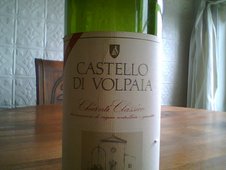While most of its bottlings are white from the Collio section of Friuli, in the northeast corner of Italy, near the Slovenia border, it also produces a beguiling red from Calabria. The winemaker Giampaolo Venica recently hosted a tasting of his line on the outside patio of The Modern restaurant, where a couple of his wines are regularly poured by sommelier Belinda Chang.
Venica & Venica wines are grown on 28 hectares over seven hills in Collio that boast, according to Giampaolo, 55 different micro-climates.
Both Chang and Giampaolo told me that the winery holds by the "Ronco Del Cero" Sauvignon Blanc as its best, and signature, wine. Which I (and Chang) found somewhat odd, since another Sauvignon Blanc, "Ronco Delle Mele," was the real stunner. An amazingly tropical trip of tart orange, lime, lemon, resting on a bed of chalky minerality and wrapped in bracing acidity, it drank like a superior New Zealand S.B. (In a blind tasting, I would have sworn it came from that country.) Cero was in the same ballpark, but seemed less stunning, simpler, less bright than the Cero. I would be totally happy with the Cero at any meal—until presented with the Mele. At which point I would switch.
Of the other whites poured, the Friulano was full, with tangerine and lime flavors; and the Pinot Grigio "Jesura" was well above the average PG from almost anywhere else in northwest Italy. But the most interesting wine on the table was arguably the Terre di Balbia "Balbium" 2008. This is V&V's only bottling from Calabria, made from 20-year-old vines of the native varietal Magliocco. Magliocco was once widely planted in southern Italy, but is almost extinct today. Bottled after a year in old casks, Balbium is 14.5% alcohol, but tasted much lighter. It has a rich, musky nose. Medium-bodied and wonderfully drinkable, it tastes of plum, dust and cherry, the texture somewhere between silky and sandy. A wonderful food wine, I'm guessing.




